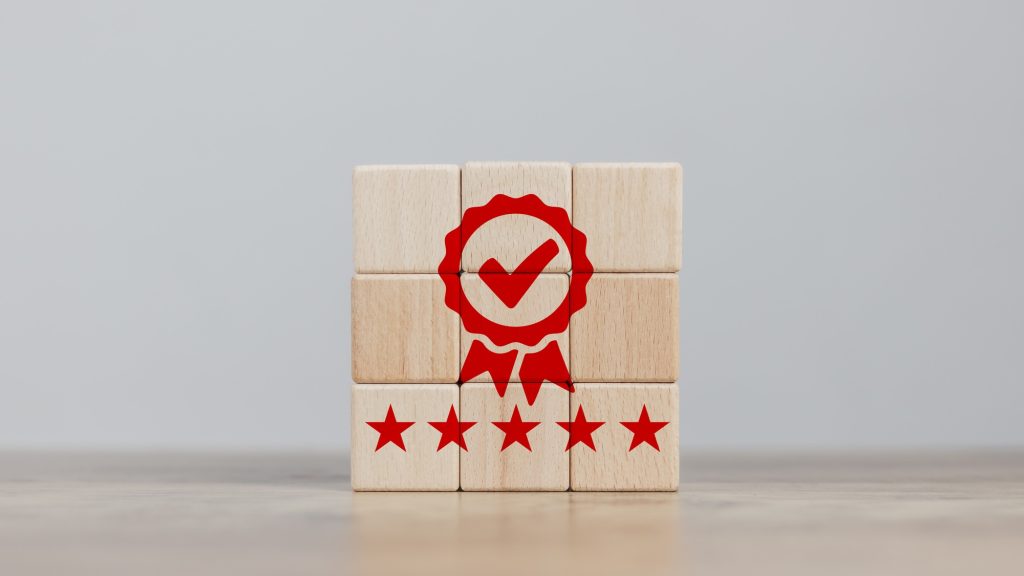Are you wondering how to scale Customer Support as your business grows? This guide provides practical strategies for scaling customer support operations effectively. Discover how to use new technologies, optimize your team, and streamline processes to meet increasing customer demands.
Scaling customer support involves enhancing capabilities to meet business growth without sacrificing quality, focusing on implementing new channels and adapting strategies. Establishing quality standards and utilizing technology, like AI and automation, are vital for maintaining customer satisfaction and improving support efficiency as the team expands.
Company-wide involvement in customer success and ongoing performance measurement through customer feedback and KPIs are essential for continuous improvement in support efforts.

Understanding Scaling in Customer Support
Scaling customer support refers to the process of enhancing support capabilities in alignment with business growth and increasing customer demands, which is critical for any organization. It’s not just about adding more people to your team; it’s about scaling support capacity while maintaining quality.
As your business scales, normal growth, covering more time zones, and handling increasing conversations across various channels can trigger the need to scale customer support, especially as volume increases. Implementing new support channels becomes crucial to meet diverse customer preferences. However, one of the organization’s biggest challenges is balancing scaling with maintaining a high-quality customer experience.
Customer expectations evolve, driving businesses to continuously adapt their support strategies. Successfully scaling customer support requires understanding the stages of support growth and implementing changes to meet evolving customer needs, like adjusting hours of operation and selecting the appropriate staffing model.

Establishing Quality Standards for Scaled Support
Quality standards maintain customer satisfaction and ensure consistent service delivery as the support team scales, enabling them to resolve issues effectively. These standards uphold consistency and trust, which are crucial for a growing customer support organization.
Quality measures should reflect the underlying values of the team and company. Scaling from a small to a larger team may require different metrics and goals, making robust quality standards indispensable.
Implement Auto-Replies
Auto-replies can effectively manage customer expectations by providing timely acknowledgments of inquiries and ensuring customers receive an answer quickly. They quickly inform customers about their request status, especially during peak times, and provide estimated response times, which helps manage expectations.
Optimize Contact Pages and Forms
Redesigning contact pages and forms encourages customers to ask clear questions, thereby reducing back-and-forth communication. Additionally, ensuring customers know alternative support options can significantly improve their overall experience.
Empower Your Team
Empowering your customer support team can dramatically enhance efficiency. Giving teams more authority to handle requests directly reduces delays and improves overall efficiency. Evaluating where existing support policies may be wasting time is crucial to streamlining processes further.
These strategies create a more responsive and effective customer support team that is aligned with the brand identity and delivers top-notch customer service.

Leveraging Technology and Tools
Advanced tools and technology enhance customer support efficiency, helping to reduce operational costs. AI and chatbots can offer 24/7 responses to common inquiries, significantly boosting customer satisfaction. Cloud-based solutions offer flexibility and can be adjusted according to fluctuating customer support demands.
Advanced routing techniques improve the management of customer inquiries within a support queue, allowing businesses to focus on delivering exceptional customer experiences instead of call center operations hurdles.
Invest in Help Desk Tools
Help desk tools enhance efficiency and collaboration and reduce redundancy within the support team. A well-designed contact form significantly reduces the need for follow-up communication, thus improving operational efficiency.
Streamlined contact forms and policies empower team members, reducing resolution times and improving overall efficiency. Empowering customer support teams allows quicker resolutions, as team members are prepared to resolve issues directly.
Utilize Automation and AI
Automation and AI considerably boost customer support efficiency. AI chatbots are ideal for answering routine questions, allowing support teams to focus on more complex inquiries. Modern AI has improved customer support automation by delivering more accurate responses based on help center content.
AI-driven chatbots learn from user interactions, improving their query resolution over time. An effective knowledge base streamlines support teams’ responses, reducing resolution times for customer inquiries.
Consolidate Data Across Tools
Integrating different customer support tools enhances data consolidation. Streamlined access to consolidated data enhances overall efficiency and effectiveness in customer support, leading to faster response times.
Enhancing Team Capabilities
Ongoing education empowers support teams to meet customer needs effectively. Proactive training strategies notably enhance team performance and customer satisfaction.
A well-maintained knowledge base can empower customers to find solutions independently, enhancing satisfaction.
Level Up Your Team
Documenting effective techniques from high-performing agents enhances team skills. Training programs should be regularly evaluated and updated to adapt to changing customer service demands.
Various training formats cater to support agents’ different learning preferences. Role-playing exercises help agents practice handling complex customer interactions.
Create a Knowledge Base
A comprehensive knowledge base facilitates customer self-service and enhances team efficiency. It offers self-service for customers, boosts team efficiency, and ensures accurate AI responses.
Businesses commonly offer self-service options, such as AI chatbots. Online portals are also popular choices for customers seeking assistance.
Build a Community
Building a community allows customers to collaborate, share ideas, and solve problems. This collaborative nature enhances support scalability.
Communities offer spaces for customers to share ideas and solve problems.

Expanding Workforce and Resources
As a company grows, maintaining service quality often necessitates expanding the workforce, which can be a significant challenge. Implementing strategies like hiring and outsourcing can help manage increased support volumes and maintain service quality.
Hiring support agents before anticipated growth ensures the capacity to meet increasing customer demands. Outsourcing customer support brings in specialized expertise that internal teams may lack, enhancing service quality.
Hire More Agents
Hiring more agents is crucial to ensure consistent service quality, particularly as inquiries increase. Hiring support agents before anticipated growth ensures the capacity to meet increasing new customers’ demands.
Outsource Customer Support
Outsourcing customer support increases capacity and reduces operational costs, allowing the manager to focus on strategic improvement. It also reduces the burden on internal staff while providing 24/7 customer service and multilingual support.
Selecting an outsourcing partner with a proven track record ensures quality service delivery. Industry experience is vital for effective customer support.
Demand-Based Scheduling
Demand-based schedules matching support capacity to customer demand improve response times and customer satisfaction.
Effective Queue Management Strategies
Adjusting support schedules according to peak customer demand can improve response times and customer satisfaction. Efficient routing and queue management can also help reduce customer wait times, ensuring a smoother support volume experience.
These strategies effectively enhance customer satisfaction and loyalty.
Review Queue Management Approaches
Revisiting traditional queue management methods helps identify more effective strategies.
Considering newer technologies can lead to better queue management solutions.
Implement Saved Replies
Utilizing saved replies can simplify customer support by providing consistent and clear answers to common inquiries. Saved replies enable quicker responses to FAQs, significantly improving response times.
Company-Wide Involvement in Support

Company-wide customer success means every department, not just the support team, is responsible for delivering value to customers. A customer-centric culture encourages employees in all roles to participate in fostering positive customer experiences.
Effective customer support requires alignment across all teams for a seamless customer journey. Many organizations fail in customer support due to siloed departments that limit collaboration and hinder customer service delivery. Clear goals and metrics across departments improve coordination in customer support efforts.
Measuring Success and Continuous Improvement
Tracking customer satisfaction through surveys can highlight how well improvements resonate with users. Regularly measuring customer support effectiveness is crucial for identifying successful strategies and areas needing enhancement. KPIs should be aligned with customer support goals to accurately reflect performance.
KPIs must align with customer goals to effectively measure success and guide decisions. Continuously measuring performance and seeking customer feedback ensures consistent improvement in customer support efforts.
Track Customer Feedback
Actively seeking customer feedback provides insights into customer experiences, needs, and expectations. Customer feedback surveys effectively track progress in customer support efforts.
Regularly collecting customer feedback pinpoints specific areas for improvement.
Measure Key Performance Indicators (KPIs)
Establishing key performance indicators (KPIs) for customer success is important for organizations, and implementing tips for effective measurement can enhance their strategies. It helps them define and track metrics that gauge the effectiveness of their strategy. Regularly analyzing customer success metrics offers performance insights and identifies areas for improvement.
Implementing Net Promoter Score (NPS) surveys provides a clear metric for tracking customer satisfaction and loyalty over time.
Mastering the Art of Scaling Customer Support
As businesses grow, mastering the art of scaling customer support becomes essential. Companies can maintain service excellence by establishing quality standards, leveraging technology, and enhancing team capabilities. Expanding resources and adopting strategic approaches ensure that businesses meet and exceed customer expectations. For those looking to enhance their customer experience further, consider exploring customer experience outsourcing to efficiently manage increasing demands while maintaining high service quality.







